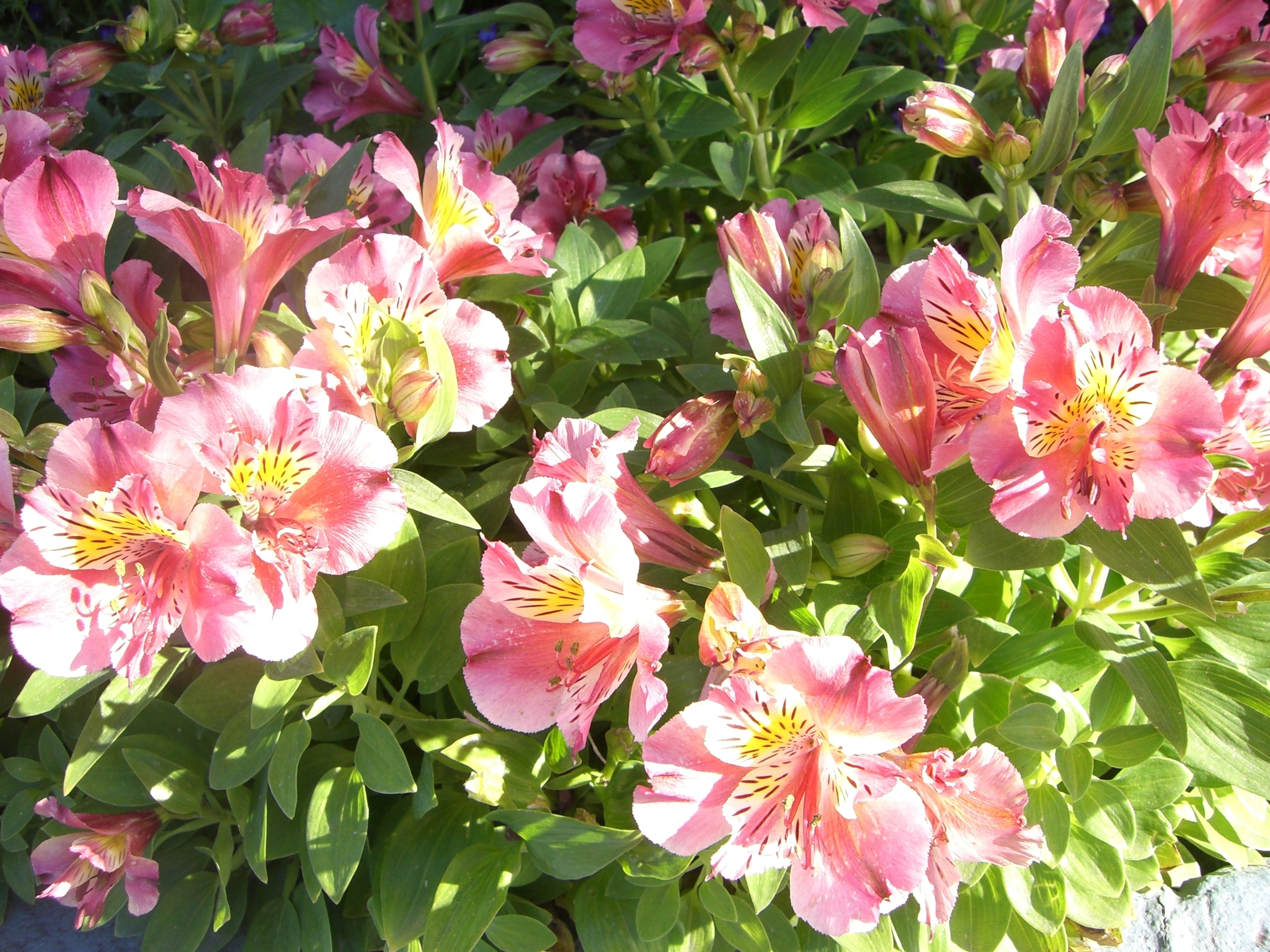
Perennial herbs, mostly rhizomatous with buds below ground (geophytes) or climbers, mostly with tuberous roots. Leaves simple, entire, along the stem, tapering to a twisted stalk-like base inverting the leaves. Flowers radially or bilaterally symmetrical, bisexual, several to numerous in terminal leafy umbel-like cymes.Tepals 3+3, free; individual flower stalks not articulated. Stamens 6, free. Ovary inferior, 3-chambered, with numerous ovules. Fruit a many-seeded, dry or leathery and somewhat fleshy dehiscent capsule. Seeds reddish brown, fleshy or dry.
John Conran
The most closely related families are the Luzuriagaceae, Philesiaceae (in the narrow sense) and Smilacaceae.
5 genera and about 200 species from C and S America; two Alstroemeria species are naturalised in Australia.
Although the roots of some species are edible, the family is mostly grown horticulturally for the flowers, both as pot and garden subjects and for the cut flower trade.
Flowers in heads of umbels of free-petalled, spotted flowers with inferior ovaries and the leaves twisted at the base inverting the blades.
Source: (2005). Alstroemeriaceae. In: . Horticultural Flora of South-eastern Australia. Volume 5. Flowering plants. Monocotyledons. The identification of garden and cultivated plants. University of New South Wales Press.
